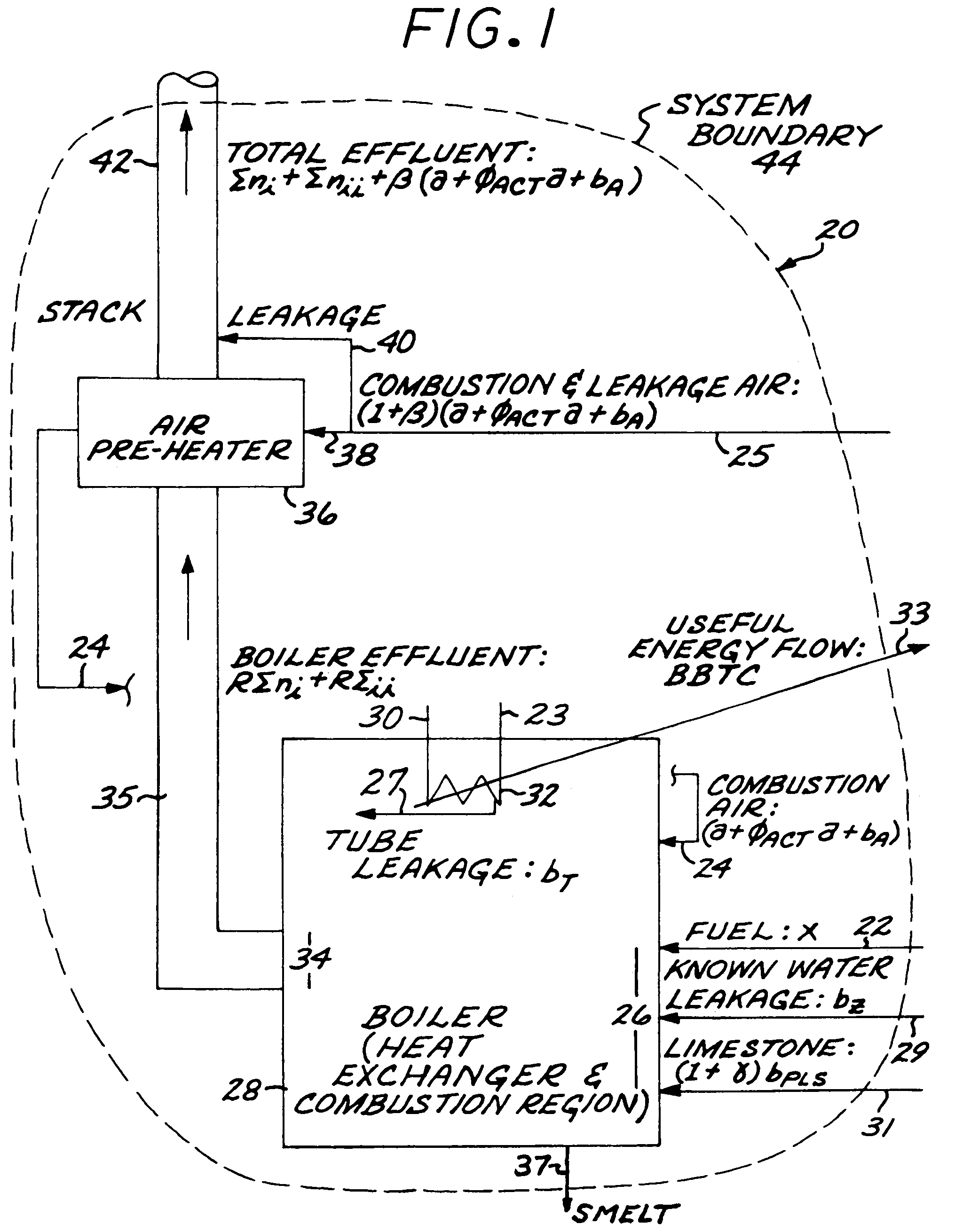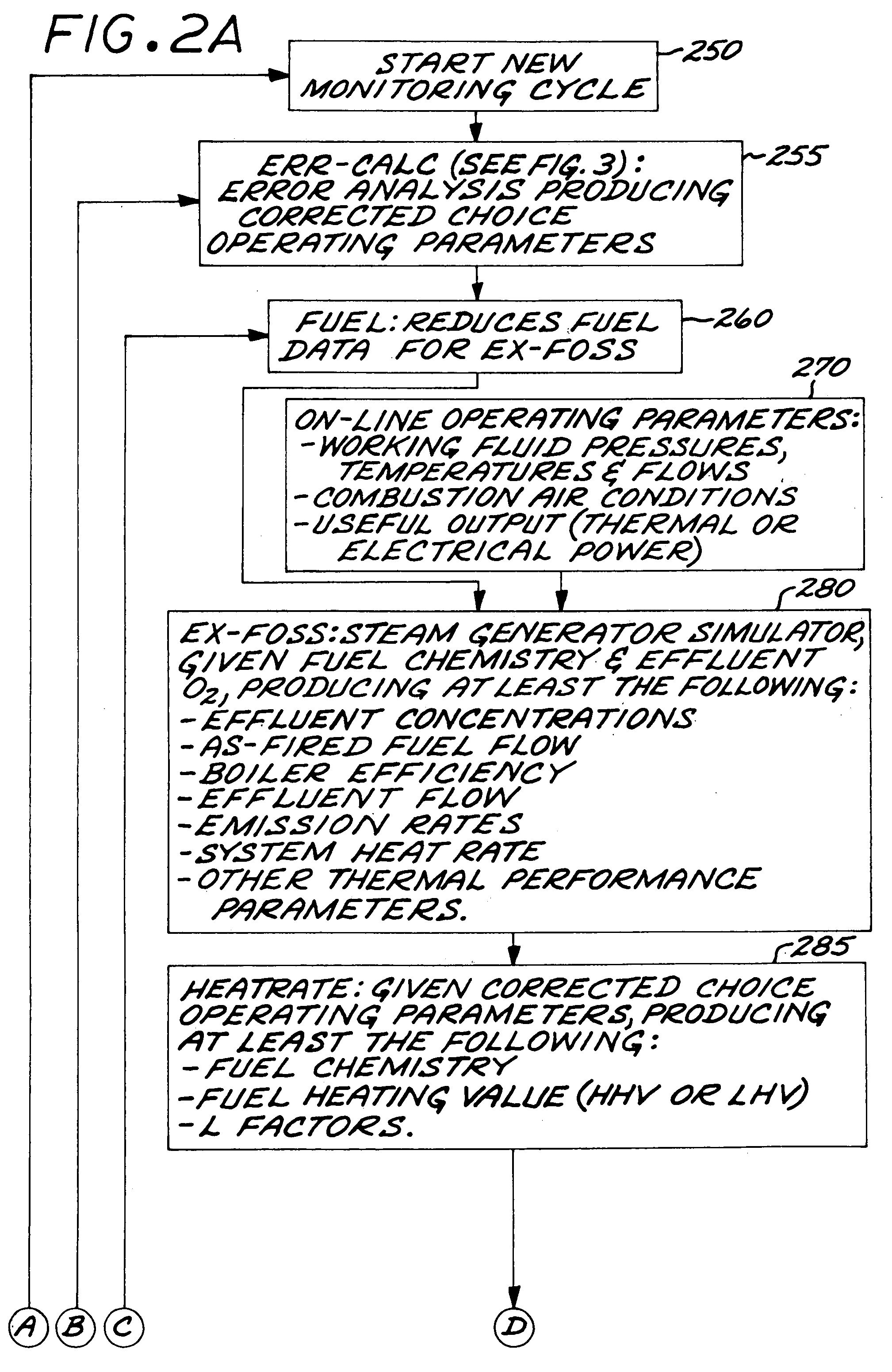Method for detecting heat exchanger tube failures and their location when using input/loss performance monitoring of a recovery boiler
a heat exchanger tube and performance monitoring technology, applied in the direction of combustion measurement, fluid pressure measurement by mechanical elements, special data processing applications, etc., to achieve the effect of reducing the outage time required and improving the ability of system operators to predi
- Summary
- Abstract
- Description
- Claims
- Application Information
AI Technical Summary
Benefits of technology
Problems solved by technology
Method used
Image
Examples
Embodiment Construction
[0034]To assure an appropriate teaching of this invention, its description is divided by sub-sections. The first two present nomenclature, definitions of equation terms, typical units of measure, and meaning of terms used herein (such as Choice Operating Parameters and System Effect Parameters), encompassing the following seventeen paragraphs. The remaining sub-sections, representing the bulk of the teachings, are divided into four general groups:[0035]1) the first group presents system stoichiometrics applied to recovery boilers and the determination of fuel chemistry based on effluents, these teachings support all subsequent disclosures herein (encompassing the sub-section entitled “System Stoichiometrics”, employing equations numbered less than one-hundred);[0036]2) the next group presents the determination of boiler efficiency for a black liquor-fired boiler as it influences both tube failure flow rate and determining tube failure location (encompassing the sub-section entitled ...
PUM
 Login to View More
Login to View More Abstract
Description
Claims
Application Information
 Login to View More
Login to View More - R&D
- Intellectual Property
- Life Sciences
- Materials
- Tech Scout
- Unparalleled Data Quality
- Higher Quality Content
- 60% Fewer Hallucinations
Browse by: Latest US Patents, China's latest patents, Technical Efficacy Thesaurus, Application Domain, Technology Topic, Popular Technical Reports.
© 2025 PatSnap. All rights reserved.Legal|Privacy policy|Modern Slavery Act Transparency Statement|Sitemap|About US| Contact US: help@patsnap.com



